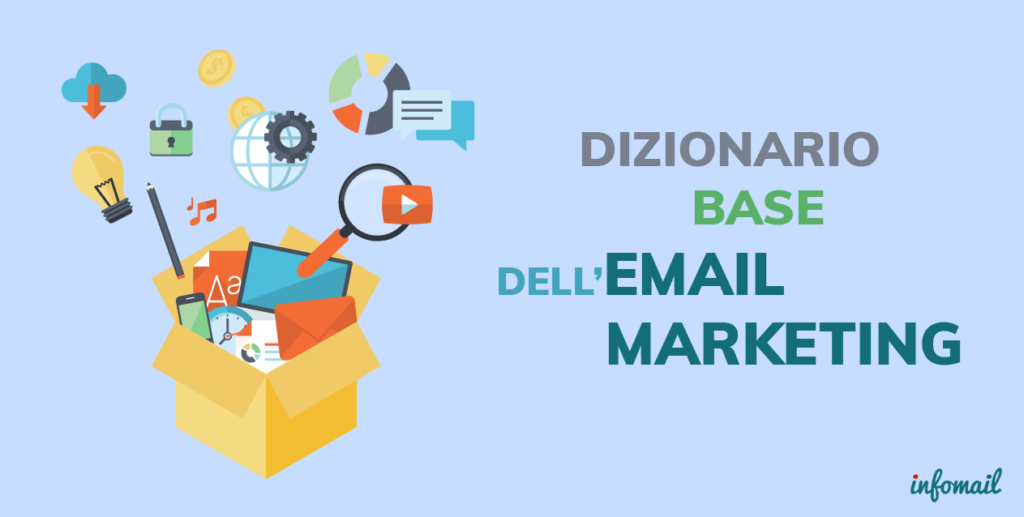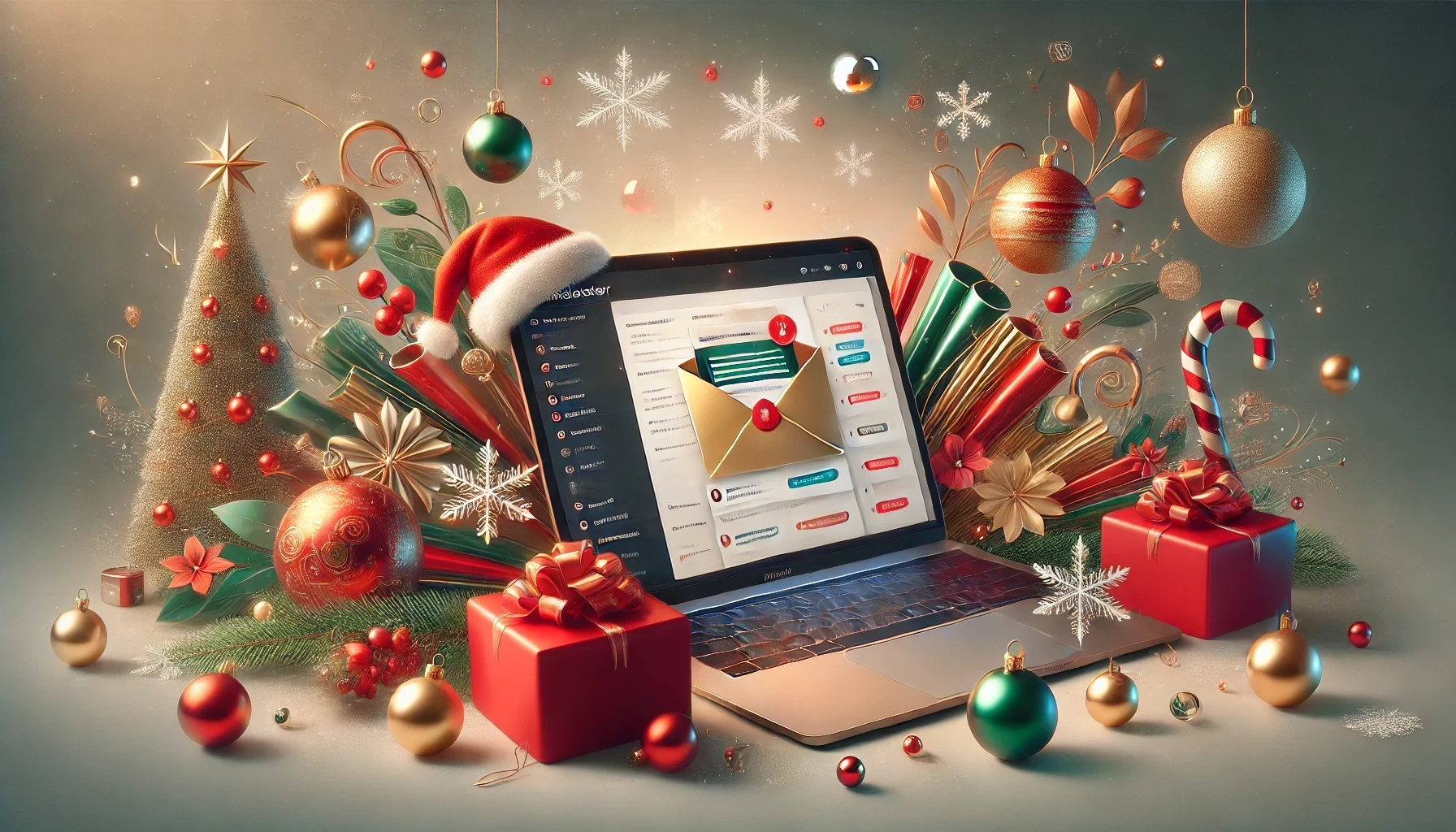Like every vertical reality, the world of email marketing is rich in specific terms in which it is important to navigate to avoid making mistakes… What is an A/B test? And what is meant by Open Rate?
We have created an email marketing glossary that is an effective and quick tool to navigate acronyms and technical terms.
A
A/B Testing: As the name suggests, it aims to be a testing process in which two possible solutions, one named “A” and one named “B”, are compared.
A/B testing in email marketing is used to determine which option is more effective (where effectiveness refers to the likelihood that the email recipient will click on the component) for defining the subject, images, text, buttons, and overall layout. Two possible solutions, A and B, are tested, for example, a message that starts with a linkable horizontal banner and one that has the same banner positioned to the right as a column. The two possible solutions are sent simultaneously to two different subsets of recipients, and performance is measured in terms of clicks, response times, and conversions on the landing page. This process is repeated for the other components of the message whose effectiveness is to be tested until all elements are obtained to define the final content to be sent to the entire newsletter database, thus initiating the actual marketing campaign.
Ad-click: The action taken by a user who clicks on a banner or advertisement to access the advertiser’s website or page.
Address list: A list of addresses used for direct marketing.
Ad space: The space on a web page reserved for banners or other advertising.
Aida: Attention, Interest, Desire, Action. It is a model used to explain the influences of advertising on consumers and its potential success.
Annuncio: Advertisement-ad. A clickable image, button, banner on a website page. It is often a hyperlink to the advertiser’s company website or another page containing more information about the product or service offered.
API: Acronym for Application Program Interface, it refers to any set of procedures available to a programmer, usually grouped together to form a set of specific tools for a particular task.
ASP: Application Service Provider. A mode of distributing multi-user applications. The customer can use the service by purchasing it in various ways.
B
B2B: Business to Business. Solutions for economic interaction between companies.
B2C: Business to Consumer. Economic solutions aimed at reaching the end customer of goods or services sold.
Banner: Banner advertisement. A famous form of advertising on the Internet that creates curiosity. The user is prompted to click for more information about the service or product offered. Many formats can be found. It is usually rectangular, long, narrow, at the top or bottom of the web page, and displays the name, logo, or image of the advertiser’s company.
Brand: The brand.
Branding: All activities that a company carries out to promote its brand.
Brand loyalty: Loyalty to the brand.
Brochure: High-quality informative material.
C
Click: the way in which a user interacts with web pages to access their content.
Click through: in email marketing, it refers to the ratio between the number of people who received the email and the number of people who clicked on the links in it.
Click stream: the path taken by a user within a single website. The user’s click stream can be traced to identify different behavioral profiles useful in understanding the temporal preferences of the content visited on the site.
Cobranding: on the web, it refers to the combination of logos belonging to different partners on the same page.
Confirmed Opt-In: the recipient of an email, after voluntarily subscribing to a newsletter, receives a confirmation message via email confirming their subscription.
CRM: Customer Relationship Management. It refers to the set of activities aimed at optimizing all stages of customer management.
Customer profiling: a system that allows to identify the behaviors of each individual user on the site and therefore discover their interests, preferences.
D
Database: an electronic archive in which data can be collected, modified, and consulted based on one’s requests.
Marketing database: an archive with data on the potential or actual customers of a company.
Direct email marketing: sending personalized messages to a group of users subscribed to a mailing list.
Direct mail: sending material to potential customers.
Direct marketing: a technique in which a company communicates directly with its customers or prospects.
Double Opt-In: a user who subscribes to a newsletter receives an email message to which they must respond. With this method, privacy is guaranteed.
E
Email: Electronic Mail. It is a type of communication introduced by the Internet that is based on the exchange of messages in a deferred manner through a computer.
Emails can have different formats: text-only (txt) or html.
Html format emails are supported by every mail client. The use of html code allows the creation of visually appealing emails, with texts formatted in many ways, animations, links within the email, graphics, and other elements.
Email marketing: A marketing strategy that is based on the use of email as a fast and pervasive communication channel.
F
FAQ: Frequently Asked Questions. It means recurring questions. A series of possible questions that a user might ask with their respective answers.
Feedback: responses, informative return. Feedback can be obtained from the responses of users who have answered a web form.
Customer retention: a marketing technique aimed at maintaining a close and long-lasting relationship with one’s customers.
Form: an online form to fill out, it is an important source for obtaining user data.
Forum: an online discussion group on a specific topic.
L
Landing page: In web marketing, it is a specifically structured web page that a visitor reaches after clicking on a link or advertisement, just like in your DEM or newsletter. This page is specially developed to address specific topics: it shows content that is an extension of the link or advertisement and is optimized for a specific keyword or phrase to “attract” search engines.
Loyalty: see fidelizzazione.
Lead: qualified contact, interest shown by a customer following a promotional initiative, such as a DEM or an advertising email, which can then materialize in starting a commercial negotiation.
M
Mailing: the act of sending mail, on the web it refers to advertising sent via email to customers.
Mailing list: list of people subscribed to a service that distributes emails on specific topics.
Marketing automation: a system to optimize customer acquisition processes by aligning marketing and sales functions to increase the efficiency of both and improve the profitability of lead generation campaigns. You can use Infomail’s APIs to achieve these goals.
N
Market niche: a group of buyers who share common characteristics and interests.
Netiquette: Network Etiquette. A set of rules and guidelines to be followed for proper use of the internet. It is not part of Italian law. Users must respect its principles as stipulated in the contract they have with the internet service providers they use to access the internet.
Newsgroup: a public discussion area for exchanging information and ideas on specific topics.
Newsletter: an email message sent to subscribers who have given their consent. It contains updated information on preferred topics.
O
One-to-one marketing: a term born in the 80s in Japan to refer to industrial goods marketing customized to the consumer. Today, on the Internet, one-to-one marketing actions are defined as communications targeted to individual users; of course, for them to be effective, a good knowledge of the market and the target audience is required.
Opt-in: a method of subscribing to a newsletter. The recipient gives consent to receive future email messages.
Opt-out: the recipient is unknowingly subscribed to a newsletter. When they receive the email message, they may have the option to unsubscribe from the service. This method, according to the principles of Netiquette, is considered spamming.
P
Permission marketing: a marketing technique where consumers are asked in advance for permission to send them information about products, services…
Prospect: potential customers.
R
Redemption: the number of responses obtained from a promotional or sales operation. Remarketing: new marketing actions to revive declining demand. Report: all the data that summarize the performance of an advertising campaign. Rich mail: email enriched with multimedia content. It transforms email from a static medium to an interactive and dynamic medium.
S
Spam: unsolicited mass email. It violates the Netiquette and the Italian law 675/96 on the protection of persons and other subjects with respect to the processing of personal data. Spamming: the sending of unsolicited electronic communications to a long list of recipients. Statistics: a fundamental tool of email marketing to monitor all user operations on the site.
T
Target: a group of customers to whom a company directs its commercial attention. Identifying a target means acquiring information such as age, gender, profession… Target market: the part of the market to which the company is addressing.
U
Up market: market for luxury goods. Up to date: current, modern.
V
Viral marketing: type of communication that encourages recipients to pass it on like a virus. It is the classic “word of mouth” adapted to the web. Virus: a program capable of replicating itself within programs. It has an effect that can manifest itself under both temporal and behavioral conditions.
W
Web form: information request form or newsletter subscription form. WYSIWYG: What You See Is What You Get. What you see is what you get.



